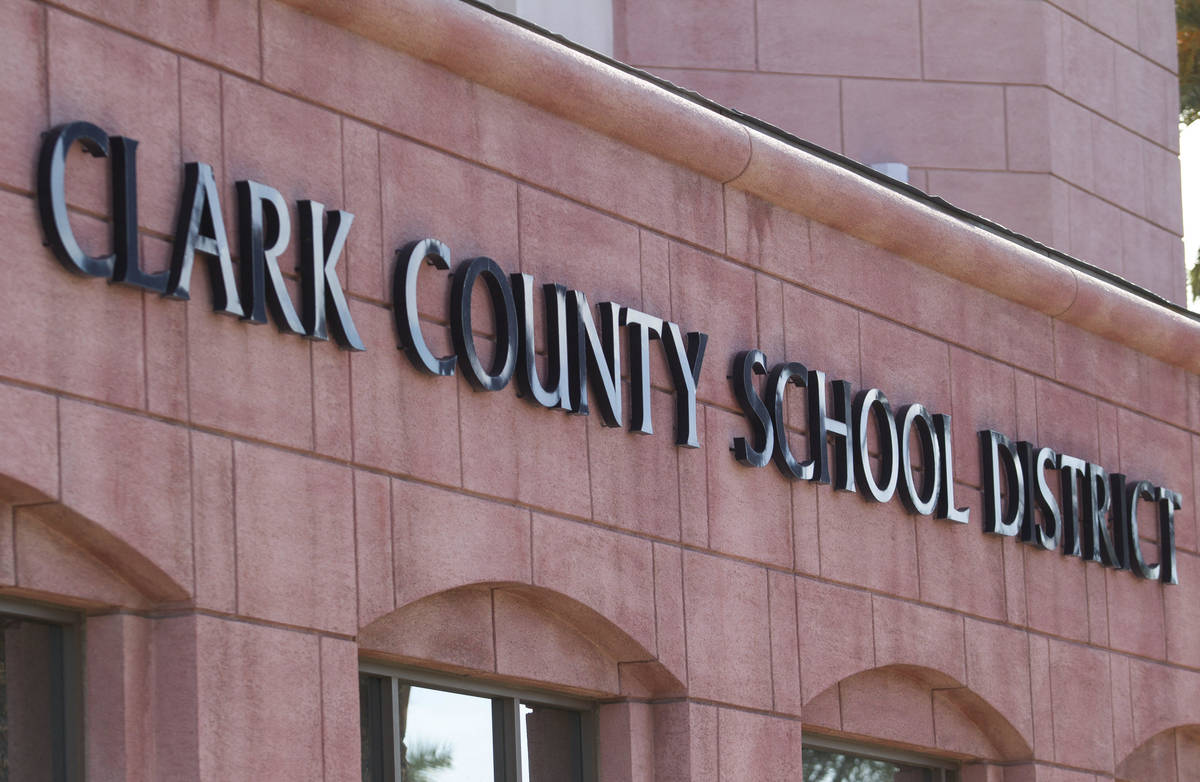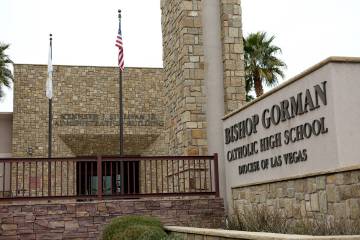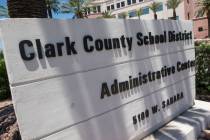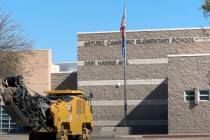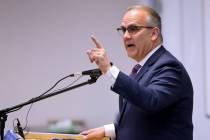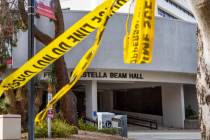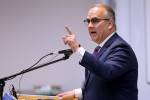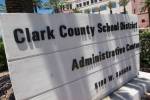CCSD staring at $38M shortfall because of coronavirus pandemic
The Clark County School District is bracing for a loss of $38 million in operating revenue because of the economic effects of COVID-19, but the final numbers for how much the district will have to cut from its $2.4 billion budget remain to be seen.
In a presentation on the 2020-21 budget to the School Board on Monday, Chief Financial Officer Jason Goudie laid out the projected impacts to the district’s main sources of revenue based on the losses the district suffered during the Great Recession.
But the district is still to hear from the Nevada Department of Education how much it will have to trim under a directive from Gov. Steve Sisolak that state agencies prepare for budget reductions of 4 percent to 14 percent, according to Goudie.
Asked for specifics of what might be on the chopping block by Trustee Danielle Ford, Goudie said there were no new details, only the usual suspects that had been up for consideration before the board in years past.
“There’s no great new ways to cut,” Goudie said. “Nobody has anything that’s really, really new. It’s a matter of trying to figure out how to use different pieces.”
By far the greatest projected loss is a $130 million drop in the Local School Support Tax, according to the budget presentation. But those impacts will be mitigated by the pendulum swing of Nevada’s school funding formula, which guarantees additional state funding when local funding drops in order to provide a baseline of support, according to Goudie.
However, the $8.6 million loss of the governmental services tax, levied on car registrations, is a dollar-for-dollar loss to the district, Goudie said. The district projects an increase in property taxes of about $19 million.
And the Distributive School Account — the state’s school funding arm — could see $58 million in cuts, Goudie said, of which $44 million would be CCSD’s share.
Other unknowns include declining enrollment and potential federal disaster funding. States that accept money for K-12 schools from the CARES Act must maintain funding for schools at prior years’ levels, but those states suffering extreme hardship can apply for a waiver from that requirement.
Goudie said he believes all states will apply for that waiver.
Trustees Irene Cepeda and Lola Brooks also asked if the potential impacts of COVID-19 could be worse than those of the recession — a point that Superintendent Jesus Jara has raised in the past. Goudie said the final budget was a baseline based on reasonable assumptions.
He added that he believes that a dramatic impact to funding is more likely in years to come than this year.
Goudie also emphasized that a $55 million ending fund balance was not a rainy day fund that the district could tap into to offset potential losses, but rather a mandate to keep at least a 2.25 percent reserve. Sharp drops in that reserve have impacted the district’s bond rating in the past.
“Until we actually have a sufficient ending fund balance … we do not have the ability to set up a rainy day fund,” Goudie said.
Asked by Trustee Deanna Wright if the district was saving on expenses with schools shut down, Goudie said the most significant savings has come from reduced fuel needs for buses that aren’t running every day.
But many schools cannot shut down their heating, ventilating and air conditioning systems in an attempt to save on utility costs, according to Goudie. Given their age, he said, “There’s a significant risk they won’t start back up.”
District representatives said after the meeting that the budget did not reflect a proposed pay increase for substitutes presented to the School Board on May 7, but that any increase would require additional cuts to the 2020-2021 budget.
Contact Aleksandra Appleton at 702-383-0218 or aappleton@reviewjournal.com. Follow @aleksappleton on Twitter.



